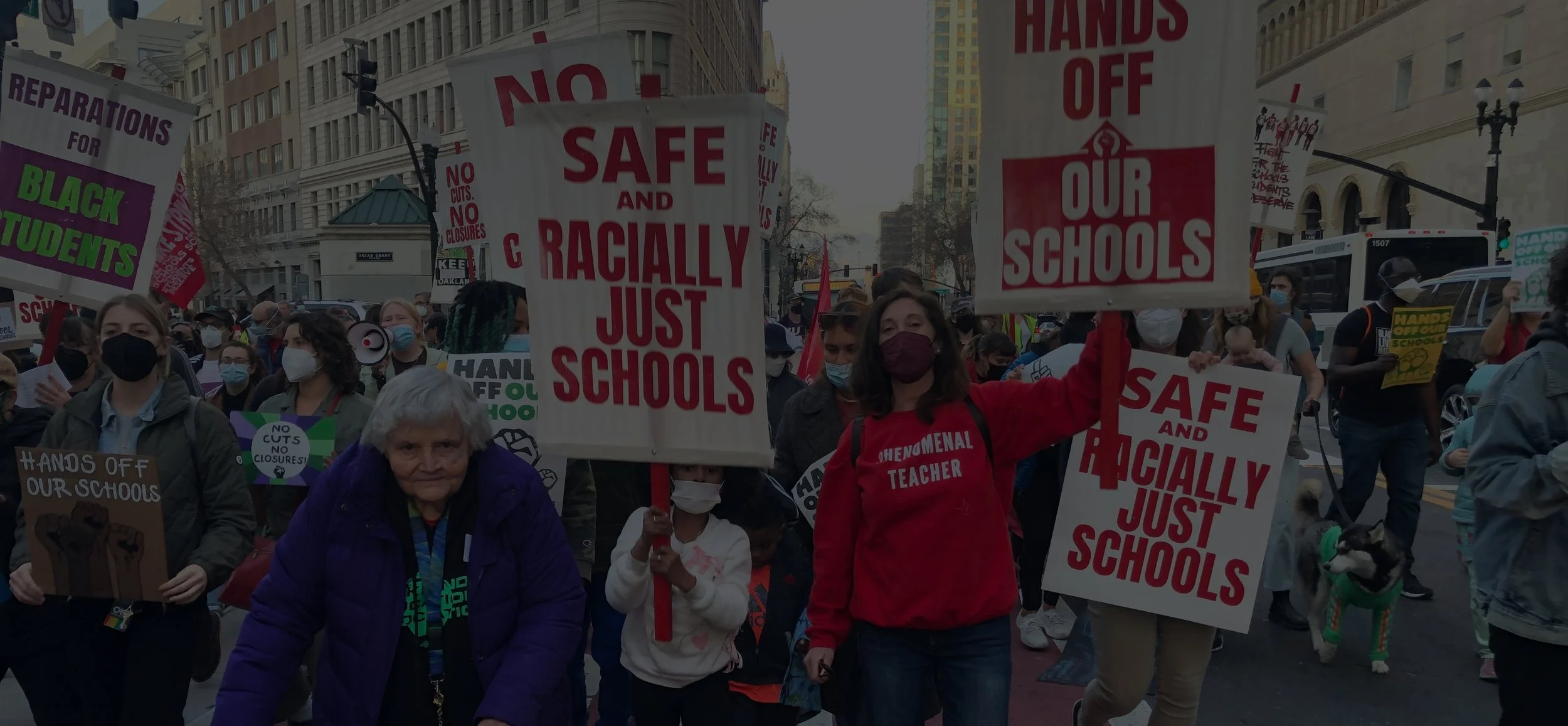Many Experts in the Classroom: Redirecting Authority
Picture of Practice with Agency by Design Oakland 2017-2018 Teacher Fellow Mallory Moser
Mallory Moser is the 11th Grade Graphic Design Teacher & Media Academy Director at Oakland International High School, which serves English language learners from around the world. She completed her second year as a Teacher Fellow with Agency by Design Oakland this school year, and decided to focus on the instructional practice of redirecting authority to drive her inquiry and learn how it would affect the dynamics of her classroom. To learn more about maker-centered learning instructional practices read more in Chapter 2 of Maker-Centered Learning: Empowering Young People to Shape Their Worlds.
Mallory showing her students around a camera at Oakland International High School
Ask any educator who teaches a class of 25 or 30 students what their biggest challenge is, and they will most likely point to the fact that they cannot possibly reach every student with the individualized instruction or support they need. How can we change this?
My inquiry question into this issue was “How can I set up structures in the classroom that will help me redirect authority and promote an ethic of knowledge sharing?” The goal was to eliminate the many voices calling for my help, and instead have:
1) A group of students who were trained to be co-teachers
2) A place in the classroom where struggling students could see who they could ask for help
3) Language frames to support both the experts and those in need of help
Students at OIHS working together on an interview.
I began by training a small group of students in each period to learn specific skills so they could help other students film interviews. Filming an interview requires many technical skills - from the setup of cameras with full batteries, empty SD cards and charged microphones, to location scouting and making sure the video was in focus with good composition, lighting and background. I took the time to train 4-5 students in each of my classes who could circulate to help the 3 or 4 groups that would be out at a time. I put their names on the board in an “Experts This Week” table, and would put helpful language frames in slides that I would leave up during work time.
Students self-selected to be experts in each class. Some of the students who volunteered were not the students I expected (mostly because they weren't the highest level English speakers), but all of them wanted to deepen their understanding of how to use cameras and help other groups in that process.
After the small sessions, these experts had a much deeper understanding of how to set up interviews than their classmates. My classroom went from the image on the left below, to the image on the right.
The classroom went from this....
...to this!
You can see a classroom of frustrated students and an overwhelmed teacher in the first picture. After the intervention and inquiry, students were helping one another, learning from each other, and ultimately mastering content through the act of explaining and teaching each other.
Through this experience I learned that training a few experts means that there are more teachers in the room - which was a huge relief! I felt like I was able to help students individually with their messages and the content because the experts were helping with set up. Additionally, having experts move around and support other groups led to much better final products, and I was able to focus on the groups of students that were struggling and really needed my support.
Putting in the little bit of extra time and energy to establish systems that redirected authority away from me and back to the students was well worth it. This inquiry was a total success for me (minus a couple of students that didn’t take the role as seriously as I would have liked), and I’m already thinking about how I can teach experts in every unit to help with the lift of technical support and skills.
"Encouraging students to engage in the making process teaches them problem-solving skills that go beyond the discrete (and quickly obsolete) technical proficiencies of any given software program. I think failure, communication skills, teamwork, and problem solving are universal criteria for building successful teams and products, so I try to support the process of making as much as the development of a final product."
-Mallory Moser
11th Grade Graphic Design Teacher & Media Academy Director, Oakland International High School, OUSD
Mallory Moser is a Bay Area native and is passionate about art, education (policy and practice) and activism. After working internationally in education microfinance and education technology, Mallory decided to change careers and step into the classroom. She loves teaching and working with teenagers, and finds this work to be highly creative because there is always a new challenge around the corner. This is her fourth year teaching at Oakland International High School, which serves newcomer refugees and immigrants, representing over 30 countries from around the world. Mallory teaches media skills to 11th graders - from basic computer skills to photography, graphic design, video game development, coding, and movie making - and is also the Media Academy Director.



























